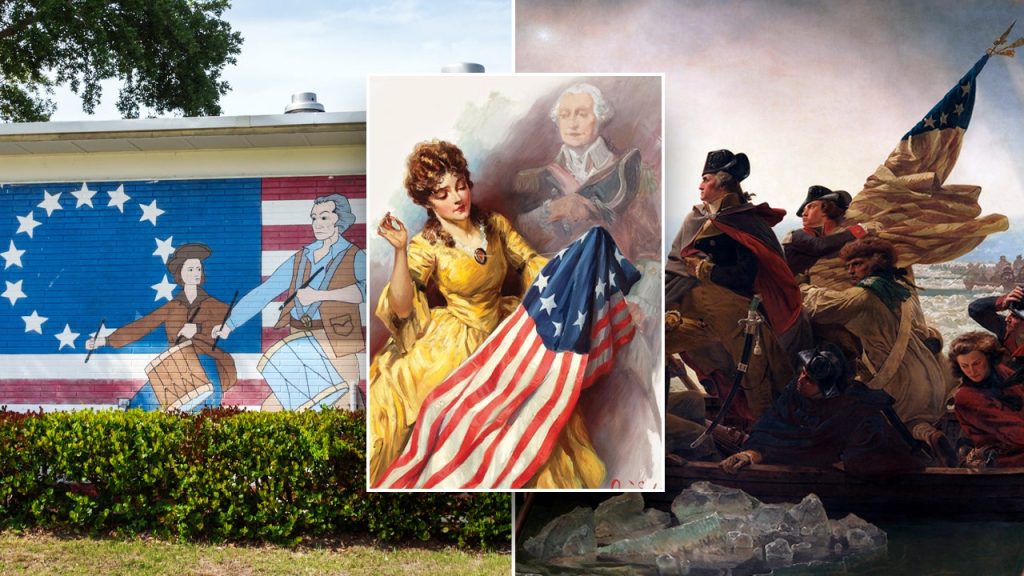Flagmaker Betsy Ross is highly regarded as a prominent figure of the American Revolution. According to a national narrative, she stitched the original Old Glory in 1776 at the request of Gen. George Washington himself. Despite some skepticism, Ross’ popularity remains strong. The true story of Betsy Ross goes beyond just being America’s first flagmaker. Ross was at the center of a captivating tale of wartime romance and intrigue. Firstly, she eloped with a man who eventually died during the Revolution, followed by her second husband who also perished. Despite these tragedies, Ross continued to support the colonial army during the war. There are suggestions that she may have also played a role in seducing a Hessian officer during Washington’s famous crossing of the Delaware River.
Elizabeth “Betsy” Ross was born on Jan. 1, 1752, in New Jersey to a Quaker family. She later moved to Philadelphia with her family. Ross showcased her rebellious spirit by eloping with John Ross against her family’s wishes. John was later killed in an explosion, leading to Betsy marrying Joseph Ashburn, who ultimately died as a prisoner of war. Despite these hardships, Ross built a successful career as a seamstress and gained notoriety for her skills. Her encounter with a committee from Congress in 1776 led to the creation of the first American flag, known as the Betsy Ross Flag. The design featured 13 stars in a circle, representing the original colonies. This flag was officially adopted by the Continental Congress on June 14, 1777, now celebrated annually as Flag Day.
During the challenging year of 1776, Washington’s army faced numerous defeats and low morale. The daring raid across the Delaware River on Christmas night proved to be a turning point in American history. By defeating the Hessians in Trenton, Washington revived the spirit of the patriots and kept the cause of American independence alive. There are accounts suggesting that Betsy Ross, a Free Quaker sympathetic to the American cause, may have played a role in influencing a Hessian officer, Count Carl von Donop, during this critical period. Historians believe that Ross’ actions, along with Washington’s bold leadership, were crucial in changing the course of the Revolution.
Betsy Ross passed away in 1836 at the age of 84, leaving behind a legacy that continues to captivate the American public. She married John Claypoole, who served with Joseph Ashburn in the British prison where he perished. Their 34-year marriage produced five children. Despite being blind in her old age, Ross continued to share the story of how she created the first American flag with her family. The origin story of the first flag emerged long after her death, leading to some skepticism. However, the image of a brave widow stitching the Stars & Stripes in 1776 resonated with the American public and solidified Ross’ place in the nation’s history.
Both maternal seamstress and conniving temptress roles attributed to Betsy Ross remain unproven but plausible. Her home in Philadelphia is a popular historical attraction, alongside Independence Hall and the Liberty Bell. Ross continues to be celebrated in national origin stories and is regarded as a crucial figure in American history. Despite the lack of concrete proof, Ross’ legacy lives on as a symbol of patriotism and resilience during a pivotal period in the nation’s past. As one of the few female figures to emerge in national stories, Betsy Ross has left an enduring impact on America’s history and identity.













